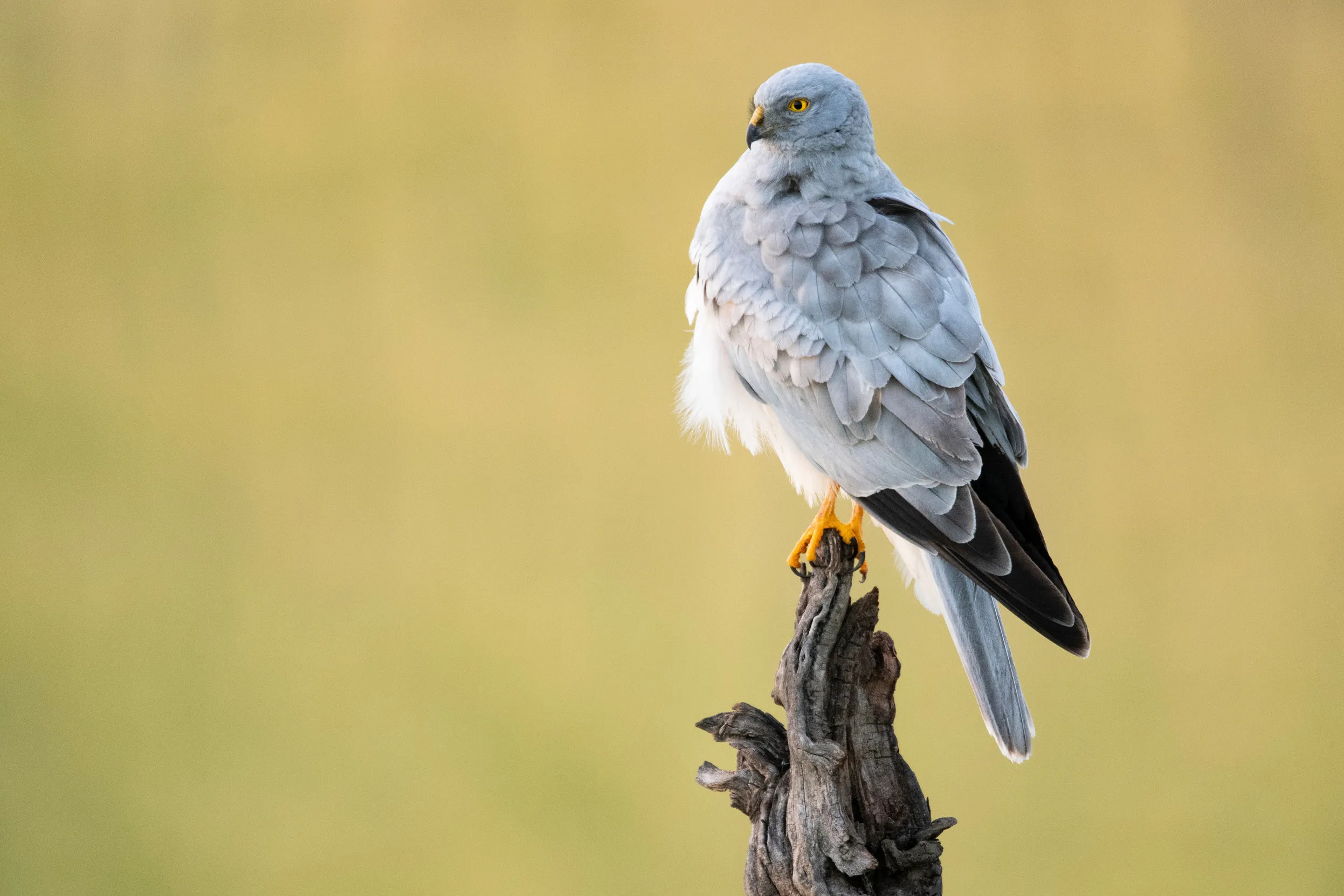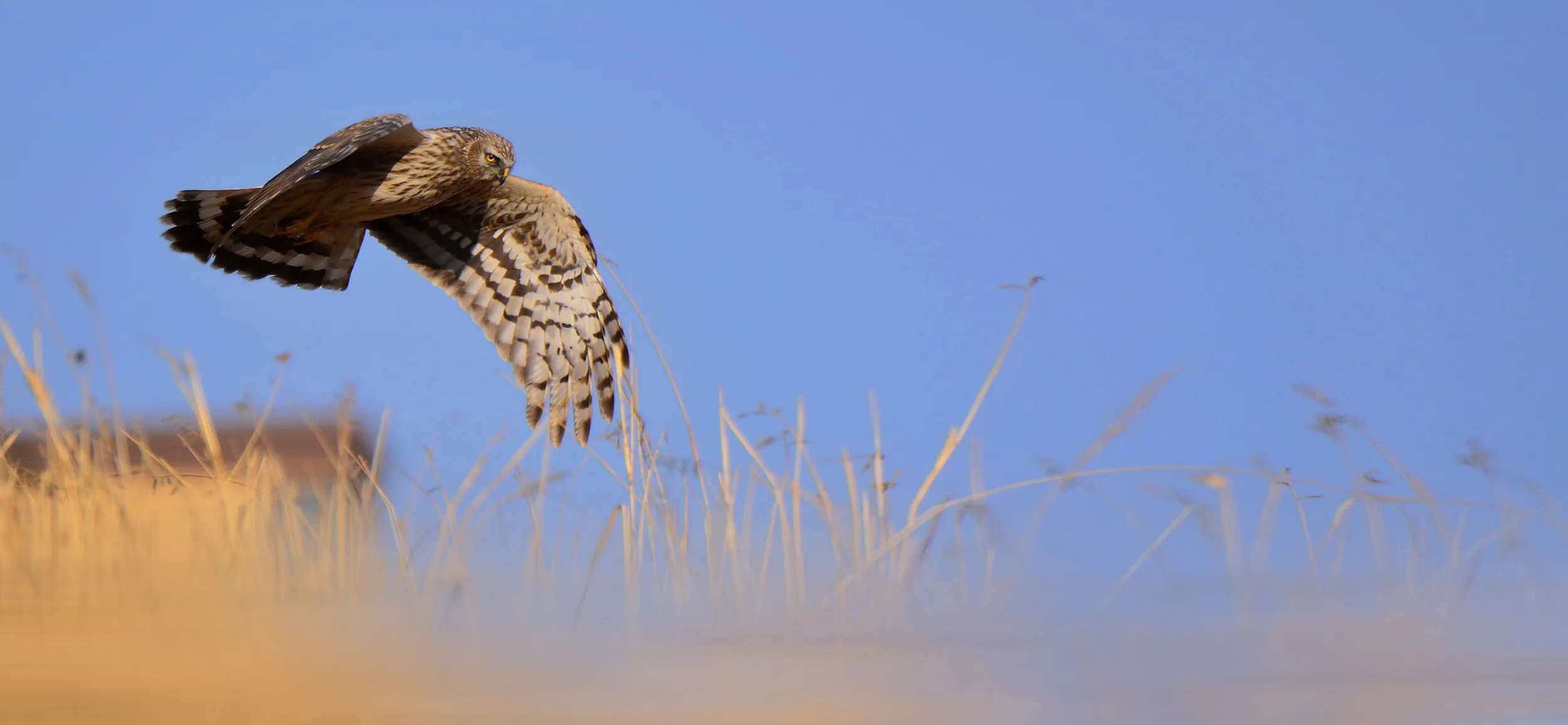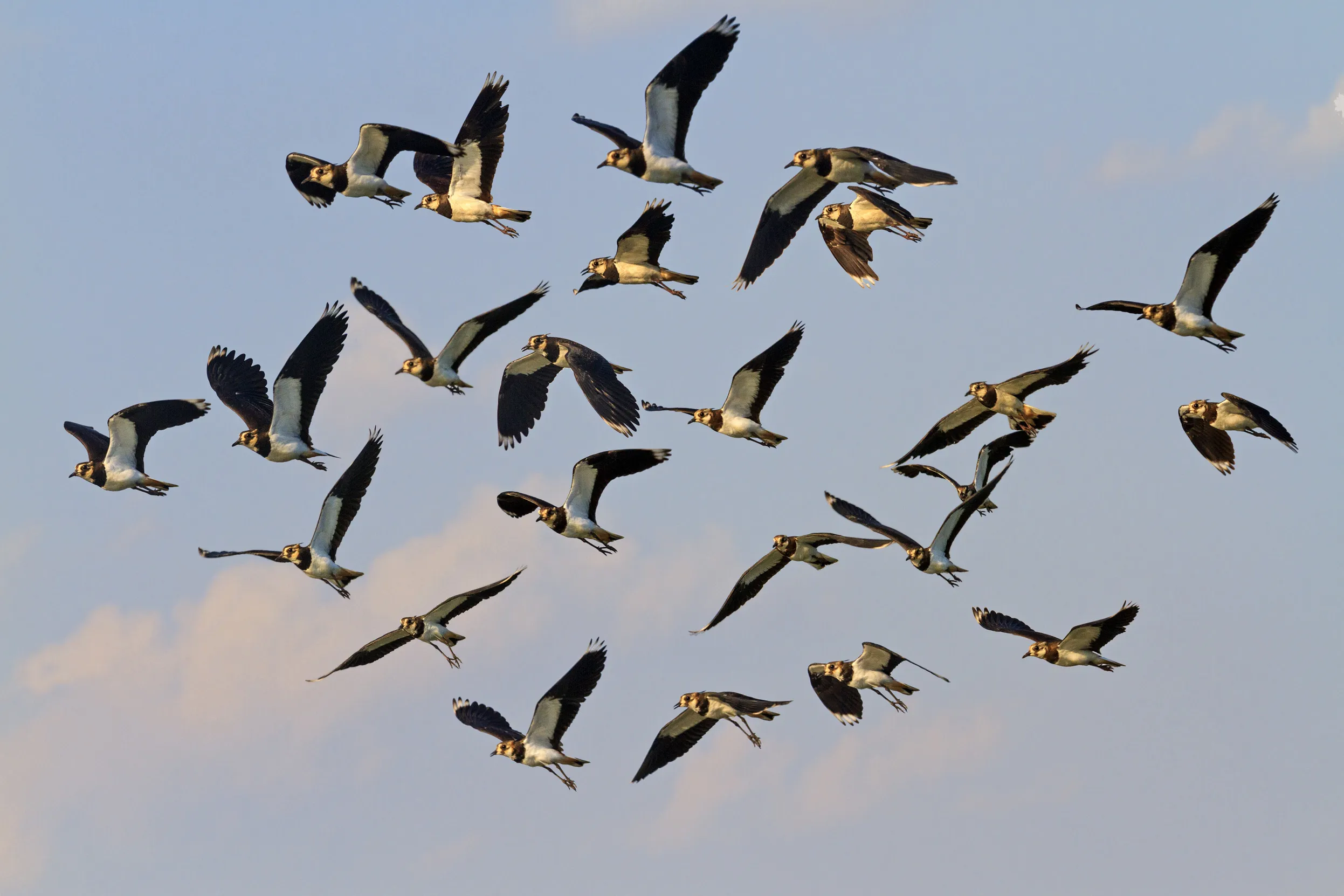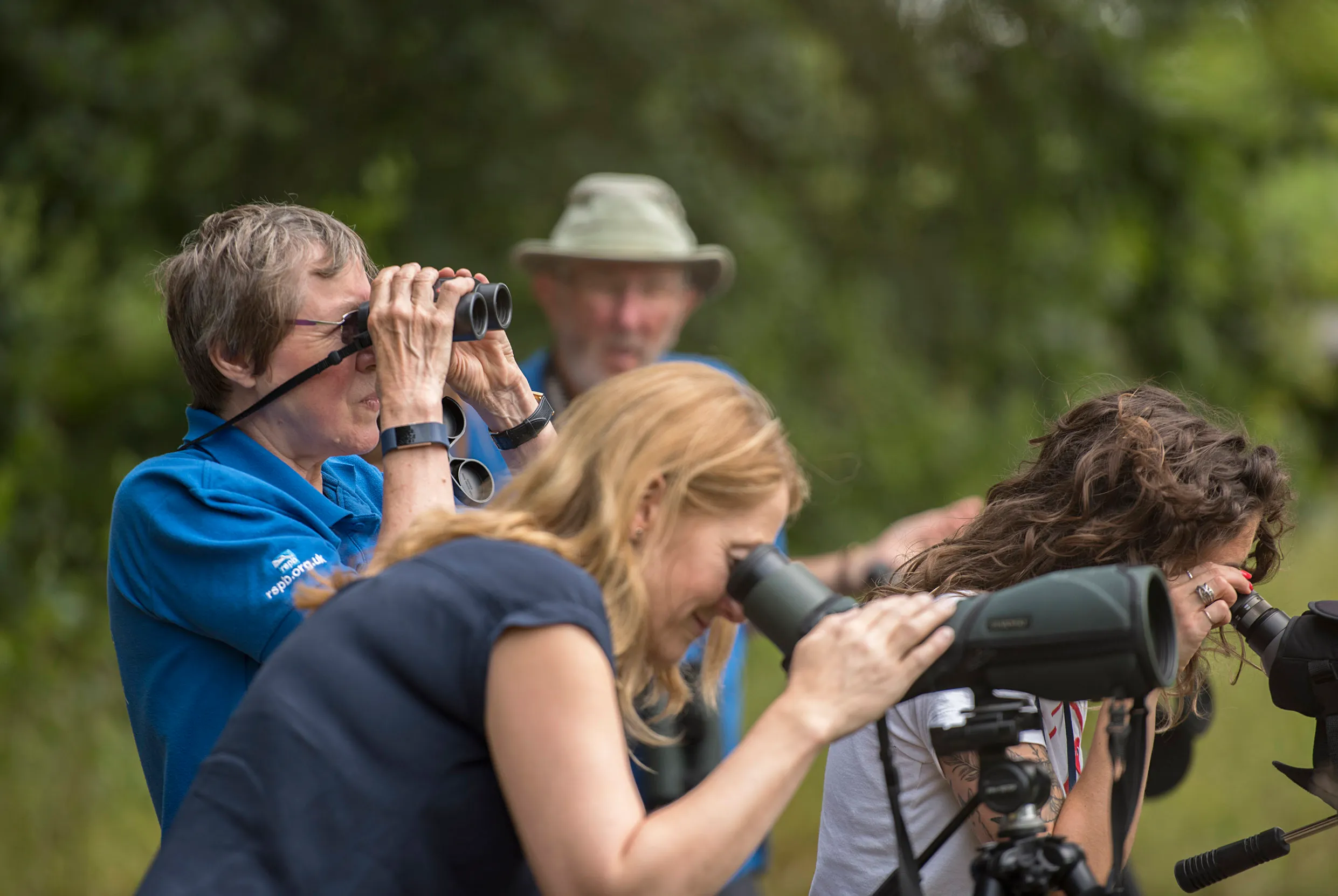
Identifying a Hen Harrier
Whilst hen harriers are now a rare sight in most paces in the UK, there are still a few areas where you can see them. As well as being able to catch a glimpse of these special birds and their acrobatic skydancing, getting outside is good for us mentally and physically.

On this page
In the spring and summer months, hen harriers can be seen in the hills looking for mates and nesting sites in heather moorland. These hills and heather moorlands, also known as uplands, cover over a third of the UK and are important for drinking water, carbon storage in peat and soils and support some of our most threatened wildlife.
In the winter Hen Harriers can be found in a variety of habitats including moorland, farmland, grasslands and wetlands. Take a look at our Hen Harrier species page to learn more about these beautiful birds.

All Hen Harriers have yellow legs, a hooked back beak, and fly with their wings in a shallow “V”. They glide low to search for their prey: small birds such as Meadow Pipits, Skylarks and young Grouse, and small mammals such as Voles.
The Hen Harrier has many nicknames – one of the most common is "ghost of the moor" and it is easy to see why. The male hen harrier has pale grey plumage, a white rump (rear end) and back-tipped wings.
Ringtails
Female and juvenile Hen Harriers, also known as “Ringtails”, both look very similar, with brown on top, checkerboard brown and beige underwings, a white rump and a bearded tail. However, females are larger than males at 400-600g, compared to 300-400g. They’re smaller than Buzzards, but larger than Crows.
You may see a Ringtail bird skydancing. This is probably a male juvenile practising courtship behaviour. It is not until the juvenile male’s second or third summer that they get their distinctive grey plumage.

Similar species



Go see a Hen Harrier
Whilst Hen Harriers are now a rare sight in most places in the UK, there are still a few areas where you can see them. As well as being able to catch a glimpse of these special birds and their acrobatic skydancing, getting outside is good for us mentally and physically.

Spread the word
Adding your voice will help increase the impact, raise more awareness and drive change.
The voices calling for change are getting louder, and the more of us who voice our outrage at the illegal killing of Hen Harriers, the more likely we are to bring about change. Self-regulation of driven Grouse moors has not worked, so we want the UK's governments to introduce a system of licensing.
Speak to people face-to-face. Write to your local government representatives. Show your support by attending bird of prey events. Join the movement calling for action to protect Hen Harriers.
Speak out
If you live or work in a rural community and have information about people illegally targeting birds of prey, call us in confidence.
The RSPB’s Raptor Crime Hotline (0300 999 0101) allows you to speak confidentially and anonymously.
Seen a Hen Harrier?
The date, time, and location of the sighting (with a grid reference if possible, or what3words reference), plus a description of the bird will help us to track rare Hen Harriers and inform our conservation work.
Email us your sighting: henharriers@rspb.org.uk